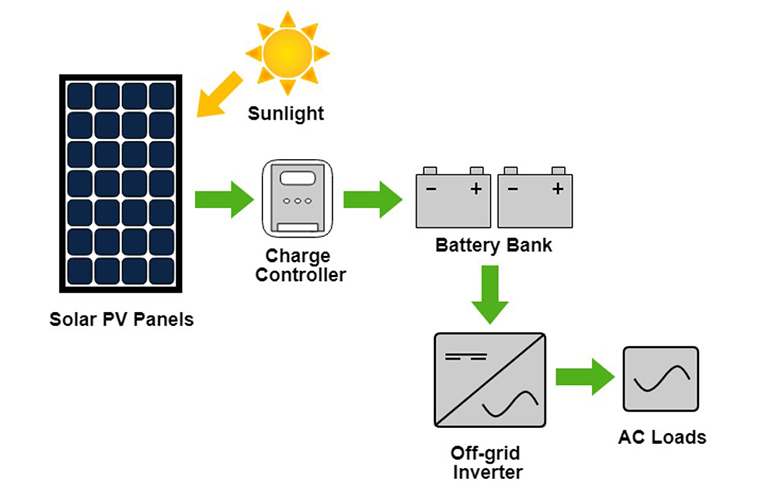Solar Off Grid System
A Solar Off-Grid System is a self-sustaining energy generation setup that operates independently of the main electricity grid. Unlike grid-tied systems, off-grid solar systems are designed to provide power in remote areas where grid connections are unavailable or prohibitively expensive. These systems consist of solar panels, batteries, charge controllers, and inverters.
Solar panels in an off-grid system capture sunlight and convert it into direct current (DC) electricity. This DC electricity is then stored in batteries through a charge controller to ensure optimal charging and prevent overcharging. Batteries serve as energy storage devices, storing excess electricity generated during the day for use during the night or cloudy periods when solar panels cannot produce electricity. An inverter is used to convert the stored DC electricity into alternating current (AC), which is the standard form of electricity used in homes and appliances.
Off-grid solar systems are especially valuable in remote locations, such as rural villages or off-grid cabins, where extending the main power grid is costly or impractical. These systems provide a reliable source of electricity, enabling residents to power lights, appliances, and other electrical devices without relying on centralized power plants or fossil fuels.
While off-grid solar systems offer energy independence and environmental sustainability, they require careful planning and sizing to meet the energy needs of the users. Properly sized battery banks are crucial to ensure a continuous power supply, especially during periods of low sunlight. Off-grid solar systems often incorporate backup generators or other alternative energy sources to provide power during extended periods of low sunlight or high energy demand.
In summary, solar off-grid systems offer a practical solution for areas without access to the main electricity grid, providing reliable and renewable electricity to meet the basic needs of residents and businesses.

